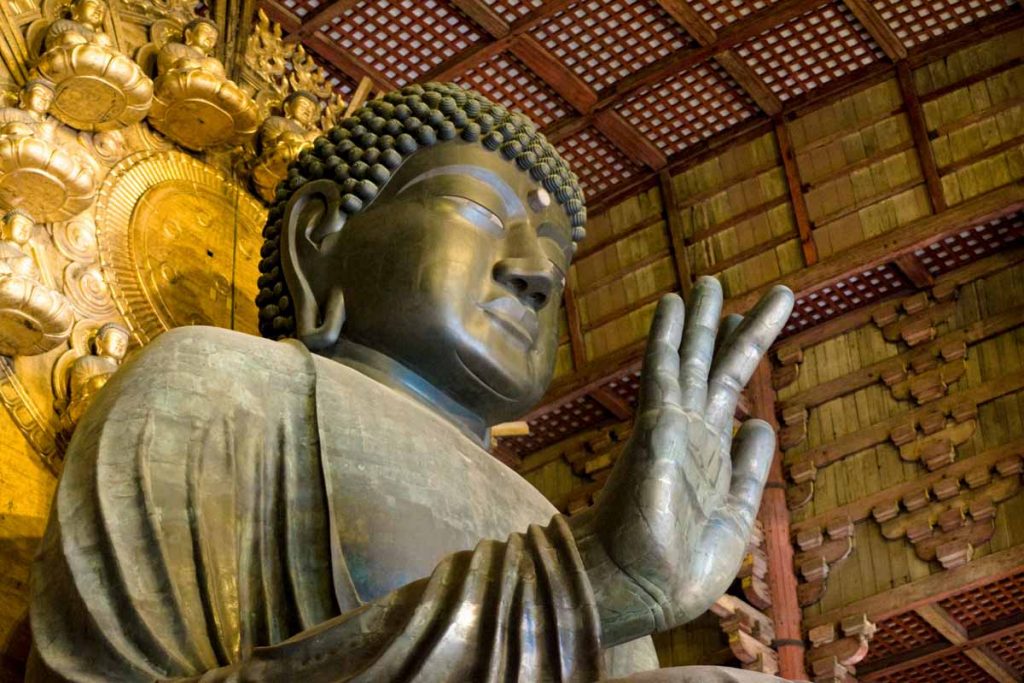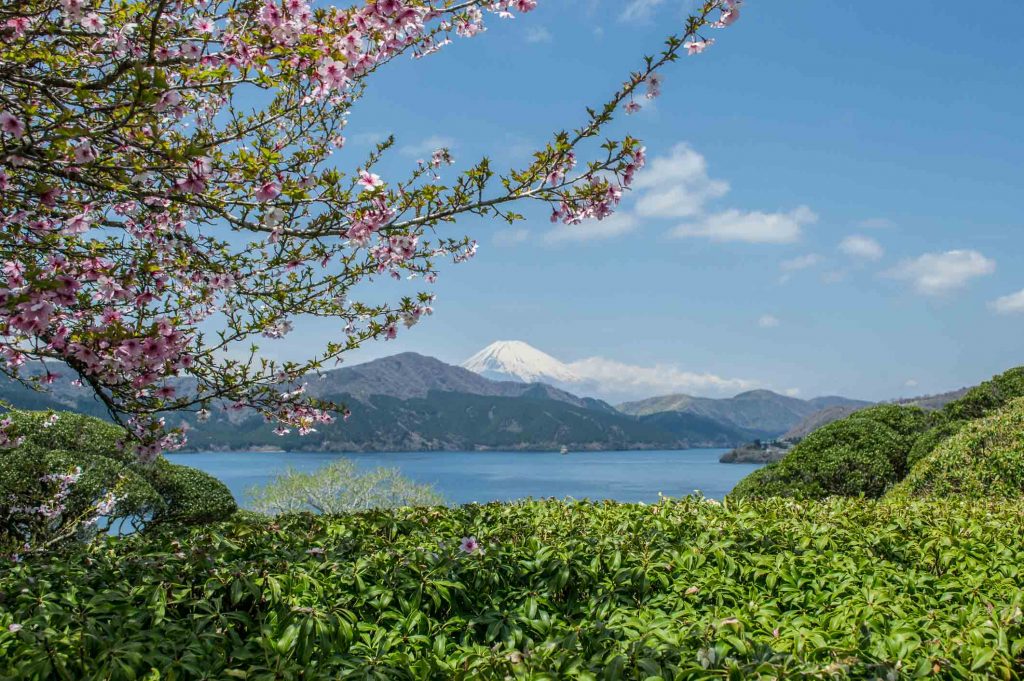Located one hour away from Tokyo, the historic city of Kamakura is an ideal destination to immerse yourself in the region’s cultural and natural environment. Kamakura used to be the capital of Japan so that explains the region’s magnificent temples, shrines and other historical sites. It also has a lush and well-preserved natural environment with both wild forests and a beautiful coastline. Kamakura is definitely the perfect getaway if you’re looking for something different or if you want to discover a more traditional and authentic side of Japan.
To see what Kamakura city has to offer, why not start with this brief video:
Now, before we begin our selection of the top 10 places to visit in Kamakura, let’s start by reviewing your best transportation and accommodation options.
How To Get To Kamakura?

Just like anywhere else in Japan, the train is the most convenient means of transportation to travel around. The train trip lasts about an hour and a one-way ticket costs around $8. You will pass by Ofuna or Totsuka as can see below.
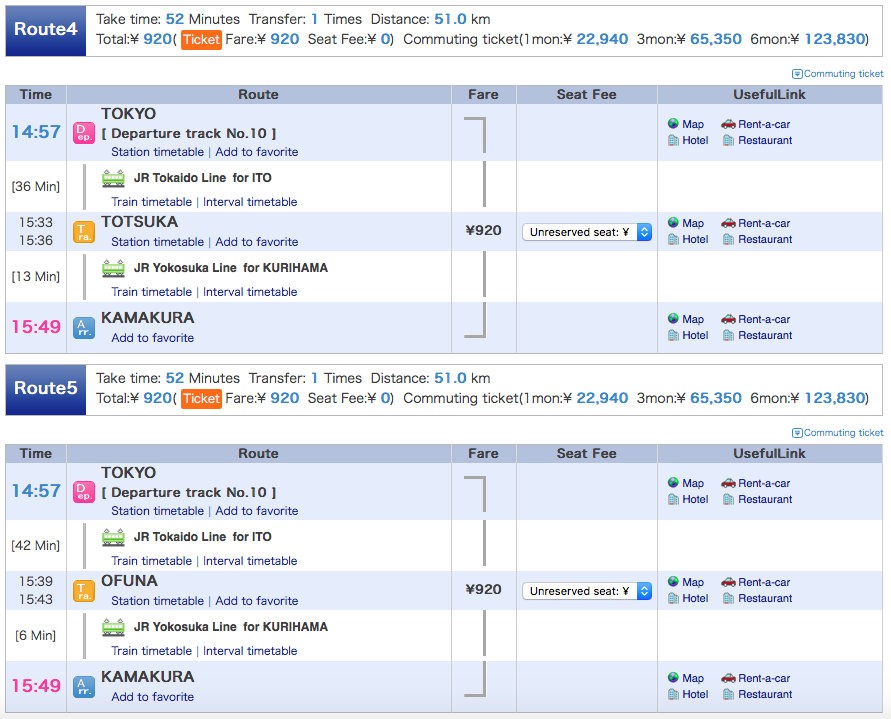
The Tokaido and Yokosuka lines are JR lines so they will be covered by your JR Pass, if you have purchased one. If you want to travel to Kamakura with a guide, you can also book a day trip to Kamakura from Tokyo.
Where To Stay In Kamakura?
Every time I travel to Kamakura, I stay at this beautiful Japanese style hostel. Make sure to book in advance because Kamakura doesn’t have many hostels so you could have a hard time finding a room if you don’t book one early enough.
The Best Things To Do In Kamakura
You should be ready to travel to Kamakura by now so let’s start our tour of the region with the beautiful Hase-dera Temple.
1. Hase-dera Temple

- Entrance fee: 400 ¥ ($4)
- Opening hours: 8AM to 5:30PM and to 5PM from October to February. Temple doors close 30 minutes before actual closing time.
The first temple you must visit in Kamakura is the beautiful Hase-dera temple. It’s not far from the Kamakura train station (exact location here) and you only have to walk about 20 minutes to get there. While you’re walking around the beautiful pedestrian streets of the city,.take a look at the nice surrounding shops.
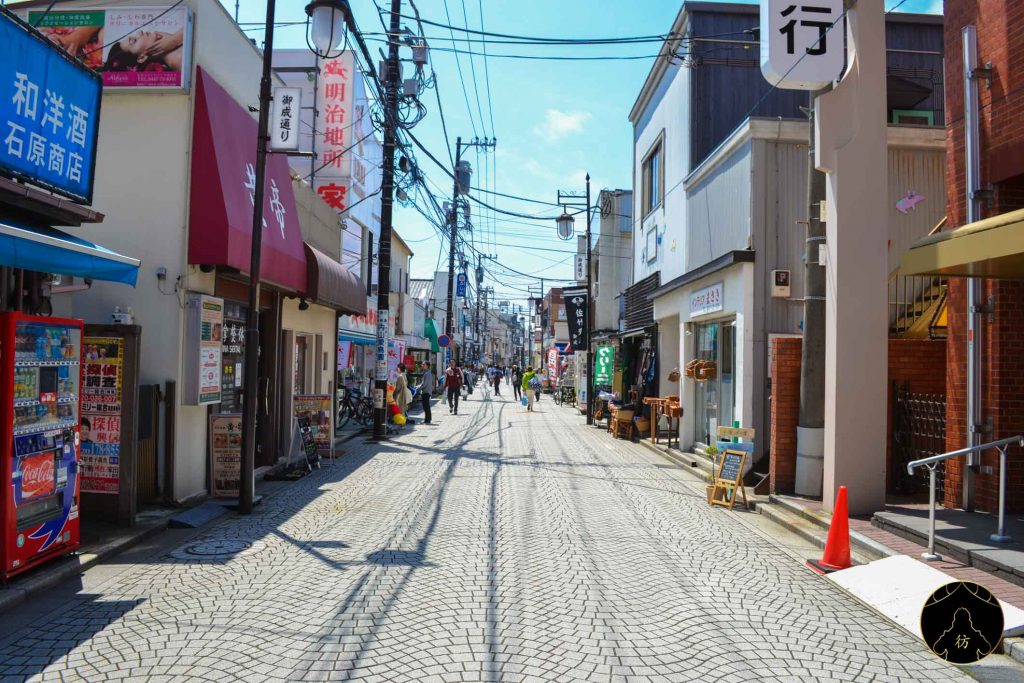
You will then get to the Hase-dera temple which is a Buddhist temple with a very nice story to tell. There was a monk from the village of Hase who discovered a great Camphor tree in the forest. Camphor trees are large trees that lend themselves to woodworking. He decided to make two statues of Kannon, goddess of mercy and a very important figure in the Japanese pantheon.
He finished his work in 721 AD and threw one of the statues into the water, predicting it will bring happiness to the village that will find it. The other statue was donated to the city of Nara in the Kansai region and is now in the Hase-dera temple of Sakurai City in the prefecture of Nara.
The prayers of the monk were finally granted and the first statue was found, 15 years later (736 AD), on the beaches of Kamakura. It was welcomed by the village as a good omen of prosperity and the Hase-dera temple was built to honor it. By the way, if you’re wondering what the statue looks like, I can’t show it to you because it is forbidden to take pictures of it in the temple. But here’s what it’s supposed to look like:
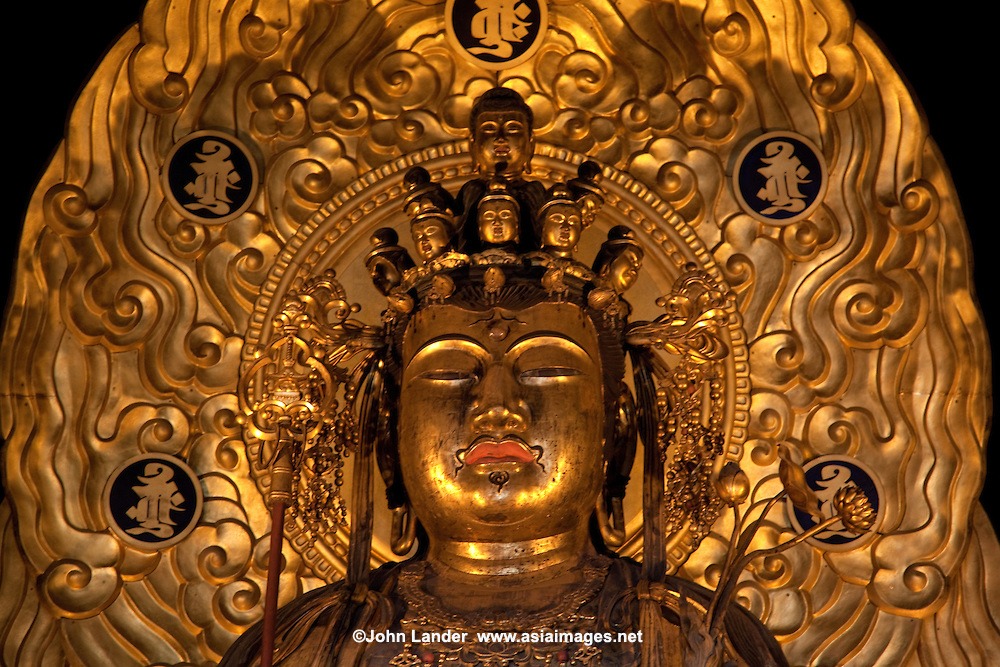
You can clearly see the 8 heads that are characteristic of the goddess Kannon. Apart from this fascinating legend, the Hase-dera temple is also a great place to visit. It covers a fairly large area, has big beautiful gardens and several temples to visit. It should take you about an hour to visit the whole thing.
Here’s a glimpse of what’s waiting for you there:
2. The Kotoku-in And Its Daibutsu

- Entrance fee: 300 ¥ ($3)
- Opening hours: 8AM to 5:30PM and to 5PM from October to March. Doors close 30 minutes before actual closing time.
A stone’s throw from Hase-dera, you’ll find Kotoku-in (exact location here), home to Kamakura’s most famous attraction, the Daibutsu, literally “Great Buddha”. The term Daibutsu is not specific to Kamakura, so there are many Daibutsu, giant Buddha statues all over Japan. Here is the beautiful Daibutsu of the Todaiji temple in Nara for example.
The Daibutsu of Kotoku-in was built around 1252, during the Kamakura period. Kamakura was the capital of Japan from 1185 to 1333 under the governance of the Kamakura shogunate. Many Japanese people think that this period was Japan’s golden era with a purely Japanese art of war that was not inspired by the Chinese and did not include firearms for example.
As far as the statue is concerned, it is quite impressive, reaching 13 meters in height and weighing 93 tons of bronze. It was originally built out of wood but it got damaged quite often and had to be rebuilt out of a more resistant material.
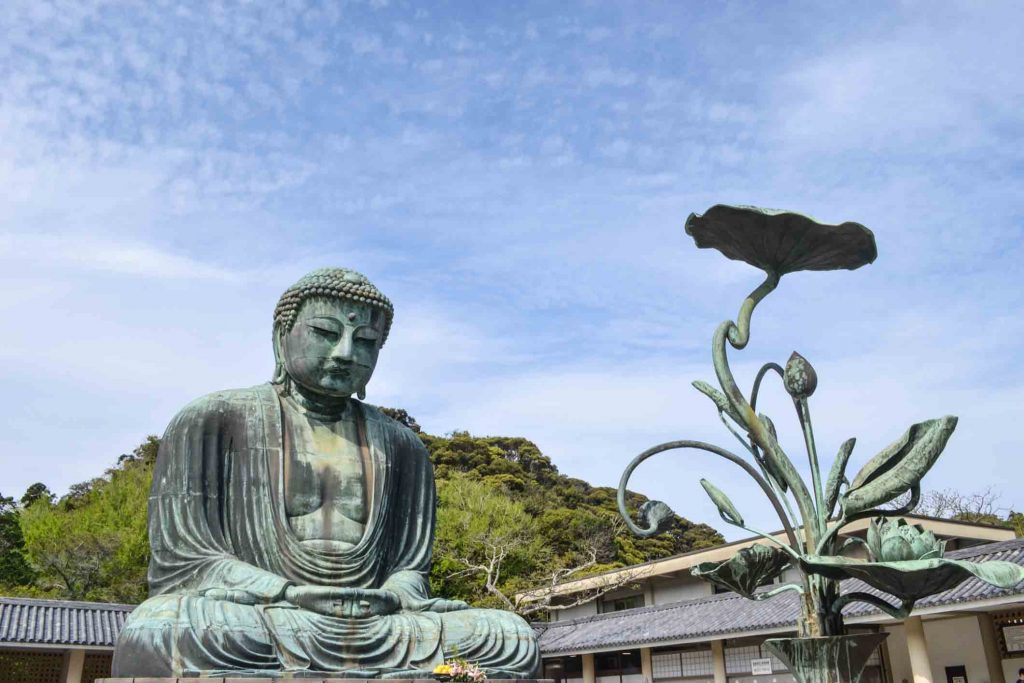
As it is the main tourist attraction of Kamakura, I recommend you to visit it the Daibutsu in the morning, preferably before 10AM, to avoid any tourist crowds.
3. Kamakura’s Beach

Don’t get too excited about this because Kamakura beach is nothing like the beaches of Okinawa with the dreamy decor of fine sands and coconut trees. It still is a very nice place to visit, preferably at sunset. You will also notice that it is a popular spot for many surfers…
… and you can even see the beach from the Hase-dera site:
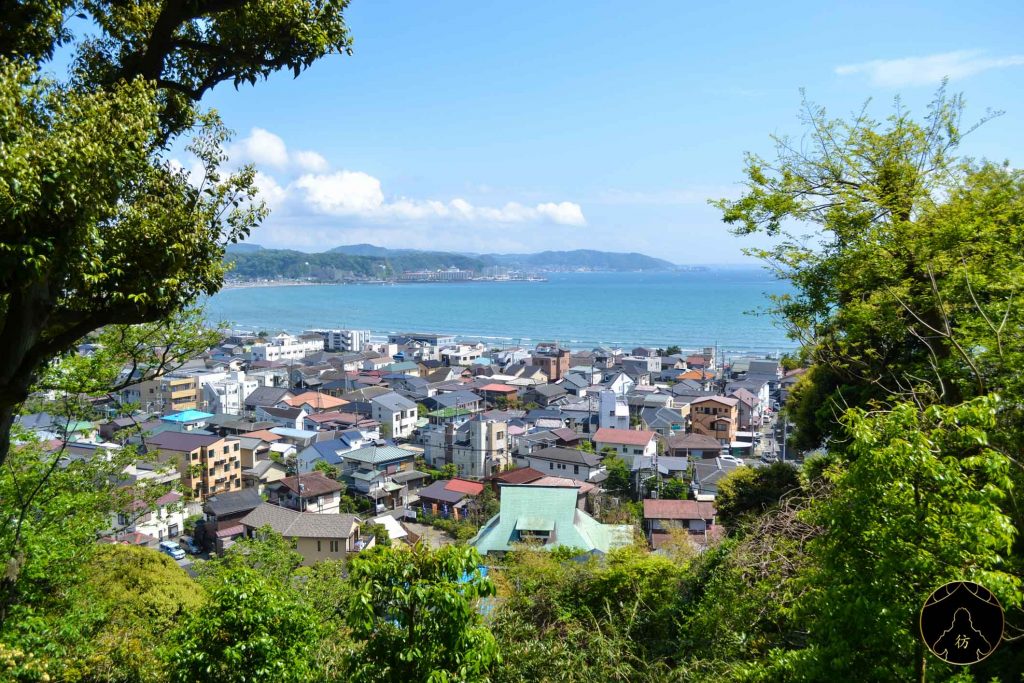
4. Sasuke Inari Shrine (My Favorite Spot in Kamakura)
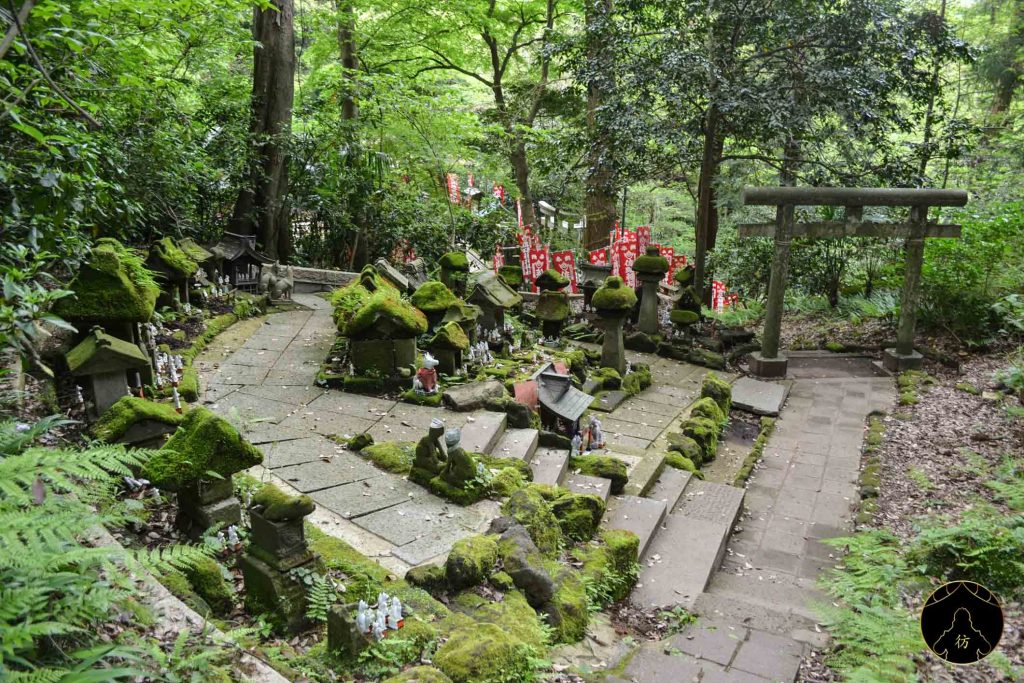
- Entrance fee: Free
- Opening hours: Open at all hours but avoid going at night, it’s in a forest and forests are full of surprises!
This is definitely my favorite place in Kamakura! The Sasuke Inari Shrine is in the forest and that’s what’s so surprising about it. It takes only 15 minutes to walk there from Kotoku-in but be prepared to climb a few rough slopes!

The shrine is a monument to the fox and the reason behind this goes back to an old popular legend that most Japanese people know. Minamoto Yoritomo, the first Shogun of the Kamakura period, is said to have had a dream where he spoke with a fox. Apparently, the animal gave him advice and helped him during the war against the Taira clan.
Minamoto Yoritomo followed the fox’s advice to the letter and won against the Taira clan in 1192, becoming Shogun of Japan and thus starting the Kamakura rule over the country. He credited his victory to his friend the fox and built the Sasuke Inari Shrine as a tribute.
Below are pictures of the magnificent shrine:
5. Bamboo Forests

No need to go to Arashiyama in Kyoto to see beautiful bamboos forests. In fact, there are many wild bamboo forests near the Sasuke Inari shrine. You can walk amidst huge bamboo trees all day long, the natural environment is simply beautiful.
6. Zeniarai Benten Shrine

- Entrance fee: Free
- Opening hours: 8AM to 4:30PM
This is yet another peculiar shrine. There’s nothing special about the Zeniarai Benten shrine as far as architecture or design is concerned, except maybe for a few wooden torii.

What’s special about this shrine is that it has a magical water source. It’s a bit like the fountain of youth but instead of extending your life, it’s supposed to “extend” your bank account. It’s Hojo Tokiyori, former regent of the Kamakura shogunate, who used to say that the water of the sanctuary multiplies the money it comes to touch.
Soon, many visitors started coming to Kamakura in search of the fortunes they ardently desire. Today, people still come and put a few yen in small wooden boxes and sprinkle them with spring water.

I wasn’t so sure about the whole thing so I tried it myself but I think I’m not a millionaire yet. I’ll update you on that as soon as things change.
7. Engaku-ji Temple

- Entrance fee: 300 ¥ ($2.7)
- Opening hours: 8AM to 4:30PM and to 4PM from December to February
Much like the Hase-dera, the Engaku-ji is a must-see Buddhist temple in Kamakura. It’s also a pretty big temple so you’ll need around an hour to enjoy the whole thing. To get there, it’s better to stop at the Kita-Kamakura train station (Kita means North), then it’s two minutes away from there (exact location).
8. Shokozan Tokei-ji Temple
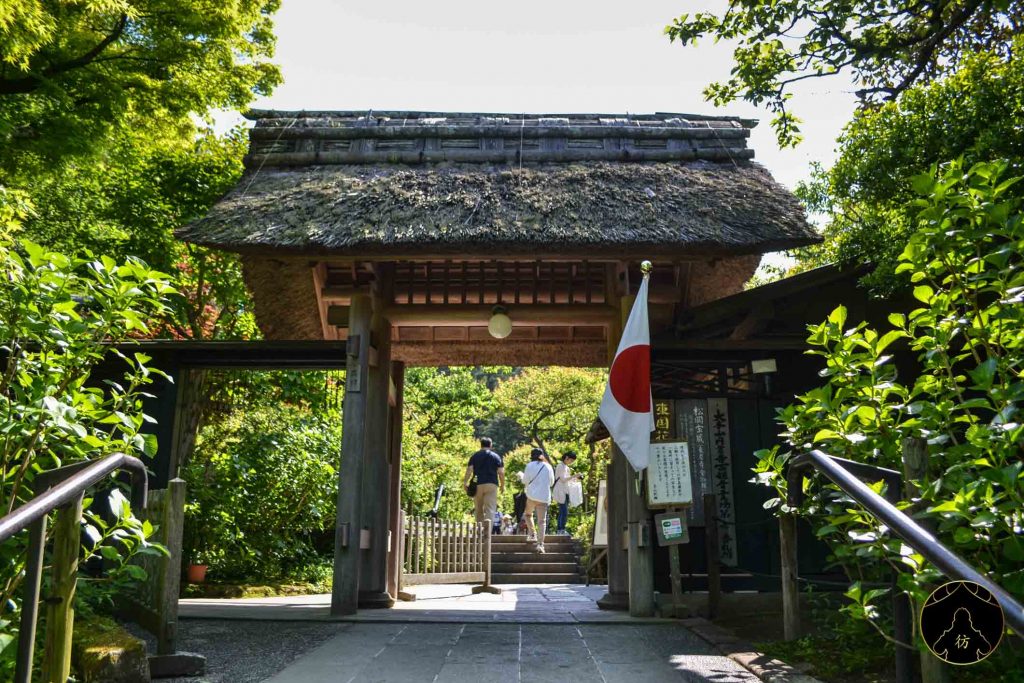
- Entrance fee: 200 ¥ ($1.7)
- Opening hours: 8:30AM to 5PM and to 4PM from November to February
I also loved the Tokei-ji temple which is right next to the Engaku-ji temple (exact location). The buildings are beautiful and the temple has a nice bell but I really liked the cemetery which is overgrown with moss of a very soothing green color.
9. Jochi-ji Temple

- Entrance fee: 200 ¥ ($1.7)
- Opening hours: 9AM to 4PM
The Jochi-ji temple is yet another temple surrounded by nature I’m sure you’ll love. It is a few meters away from the Engaku-ji temple (exact location). It closes earlier than the other temples so it is recommended to go there before 3:30PM to be able to visit the whole temple.
10. Tsurugaoka Hachimangu

- Entrance fee: Free
- Opening hours: 5AM to 9PM. It opens at 6AM from October to March and is open 24 hours from January 1st to 3rd.
Last but not least is the Tsurugaoka Hachimangu shrine. My camera died at this point so I don’t have pictures to show you of this temple. Sorry! I know, I know, real professional photographers always carry extra batteries just in case.
If you liked Kamakura, you will also like Hakone which is not very far actually. It’s got beautiful natural landscapes, an impressive shrine and a lake with a view of Mount Fuji.
To follow my upcoming adventures in Asia, don’t forget to follow me on Facebook, Instagram, and Pinterest.
See you around,
MF
PS: For more destinations near Tokyo, check out this article: Day trips from Tokyo.



